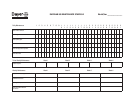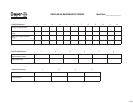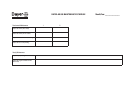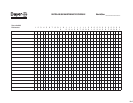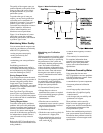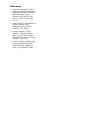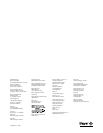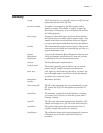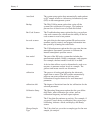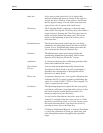
The quality of the reagent water you
produce depends on the quality of the
water you start with (source water),
and the performance of your water
purification system.
To produce the type of water you
require, you may need a purification
system that uses a combination of
methods. For example, if you want to
produce Type I water, you need a
system that uses adsorption to remove
organic impurities, ionization to
remove ionized impurities, and
filtration to remove particulates.
Figure 1 is an illustration of a water
purification system that combines
adsorption, deionization, and filtration
to produce Type I water.
Maintaining Water Quality
You can ensure that the reagent water
supply in your laboratory consistently
meets NCCLS guidelines by:
• storing reagent water properly
• testing for resistivity and
contamination
• maintaining your water purification
system
Establishing procedures for
maintaining reagent water quality is
also required for laboratory inspection
and accreditation by the College of
American Pathologists (CAP).
4
Storing Reagent Water
Type I reagent water cannot be stored.
Use it immediately after you produce it
because it degrades quickly and no
longer meets Type I reagent water
specifications. Additionally, you cannot
purchase Type I reagent water because
its purity is not reliable.
Store Type II and Type III reagent
water in glass or polyethylene bottles.
Use it as soon as possible after prepara-
tion to reduce the risk of contamination
by microorganisms.
Testing Reagent Water
To monitor water quality and detect
problems with your water purification
system, test reagent water regularly for
resistivity and bacterial contamination.
You may also want to send reagent
water out of the laboratory periodically
for independent evaluation. Record
your test results and any corrective
action.
Refer to the NCCLS specifications for
information about recommended water
testing methods.
1
Figure 1. Water Purification System
Maintaining your Purification
System
Efficient operation and regularly sched-
uled maintenance of your water purifi-
cation system is the key to optimizing
the performance of the system and
consistently obtaining reagent quality
water. Preventative maintenance
reduces the chance of the purification
system introducing additional contami-
nants into source water and ensures
that reagent water retains its purity
when it is introduced into the labora-
tory instrument.
The following are suggested guidelines
for maintaining water purification
systems to ensure smooth operation
and prevent system problems.
For Customized Water Systems . . .
• Change filters on carbon or
membrane filter systems as required
• Use a recirculating pump to optimize
performance and reduce
contamination
• Filter the source water before
treatment in reverse osmosis systems,
and recirculate deionizers in closed
loops to extend resin life
For Distillation Systems . . .
• Check the water vessels regularly for
the presence of a slippery film
• Clean and disinfect the vessels as
required with an agent that rinses
well, such as H
2
O
2
• Clean the boiler regularly to remove
deposits
• Test routinely for contamination
For complete information about
operation and maintenance require-
ments for your water purification
system, refer to the manufacturer’s
specifications.
Problems Caused by Water
Using water that does not meet
NCCLS guidelines can cause problems
with clinical laboratory systems. Some
common problems include:
• contamination of system components
• inaccurate patient and calibration
results
• out-of range quality control results
• deterioration of lyophilized quality
control material
• color changes and poor stability and
performance of reagents
These problems can be caused by
failure to use the appropriate type of
reagent water, bacterial contamination,
and inadequate maintenance of the
water purification system.
Refer to the troubleshooting section in
your system manual for more detailed
information about problems caused by
water that does not meet reagent water
specifications.




